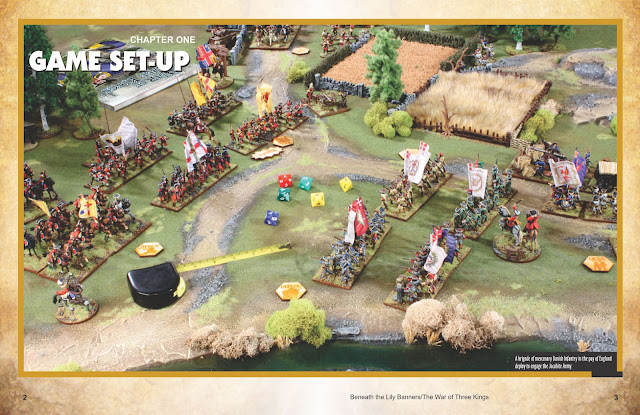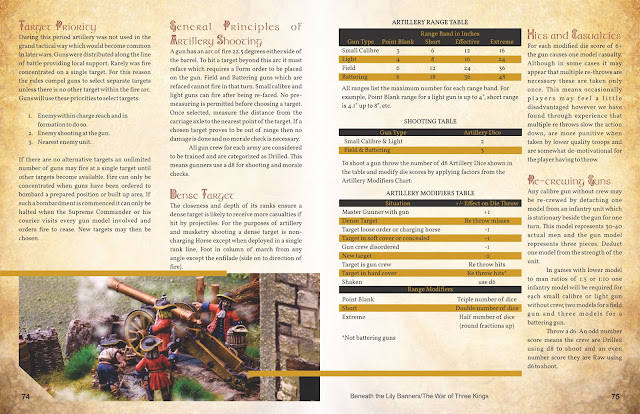The War of Three Kings - "How is this game different?"
Before talking about what's new, let's look at some things that stayed the same...
Unit Organization
For the most part, units are organized in the same manner they've always been - three stands for a battalion of Foot and two stands for a squadron of Horse. Those of you with existing armies will easily make the transition, while those new to the period will have clear guidelines to get stuck in. There IS a new element to unit organization that we'll touch on below...
Command and Orders
The system of lording over your little lead people is the same as in previous editions. Orders in The War of Three Kings are placed in secret, either written on paper or using counters (like these), to be revealed simultaneously before movement. Also as in past editions, you may not be able to issue orders to all of your troops so you will need to have a clear plan in mind - including planning that your rascals might decide to dawdle in the rear.
Movement and Terrain
For the most part, these are unchanged.
Charging
With minor alterations, the charging sequence is largely the same as before.
FIBUA
The procedures for Fighting In Built Up Areas is also very similar to methods used before with the exception of some broad mechanics outlined below.
Ok! So now what's new?
Polyhedral Dice
One of the biggest changes you will find in The War of Three Kings is the introduction of the funny dice found in Donnybrook for simulating different skill levels of soldiers. Raw Troops are d6, Trained Troops are d8, and Veteran Troops are d10. When called to make a test for combat or morale, units will roll a number of the appropriate dice to determine the outcome. This has the immediate effect of removing a pile of modifiers from the combat charts!
A Point System for Pick Up Games
No, you won't be slogging through some complicated spreadsheet. We designed a one-page system to help new players balance their scenarios or throw together a quick game at the club.
Pike to Musket Ratios
Something new to unit organization is the ability to define your Foot battalions as All Pike (three stands of pike), Pike and Shot (one stand of pike and two of shot), Regulation (three stands of shot with a pike 'marker' stand behind - the default of previous editions), or All Musket (three stands of shot). These battalions are handled differently in combat and allow an extra level of detail and tactical options on the table without adding much in the way of complexity.
Dragoons
Dragoons often come off as poor cavalry and brittle Foot and this doesn't really match their usefulness when you read accounts of battles. The rules for dragoons have been modified to more closely allow them to fulfill the types of roles they performed on the battlefield.
Detachments
While true skirmishers were not deployed in this period, there any many accounts of companies being detached to form a forlorn hope, man a redoubt, mine a bridge, or... well... yes, act as skirmishers, normally to delay an enemy advance through difficult terrain or deny enemy scouts vital intelligence. Detachments are a new troop type in The War of Three Kings to allow these sorts of actions.
Consistent Mechanics
Beneath the Lily Banners is a game that evolved over decades. To simulate the various aspects of combat and morale, different mechanisms were employed to try and duplicate the historical outcome of the action. We went to great lengths to ensure the outcomes in The War of Three Kings match those of earlier editions, but we redesigned all of these mechanics so they pretty much work the same. Artillery, Shooting, Close Combat and Morale are all pretty much 'roll x-number of dice with these mods and try to score target number y'.
Of course, there's also all new photos and artwork, plus an all new battle report featuring Bob and Dave (The Bill and Ted or Wayne and Garth of the League of Augsburg)!
Not long now... finishing the final editing... I can't wait to get this book out to people!



